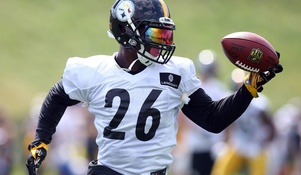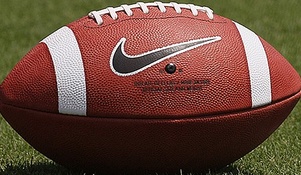The Heisman Trophy's quarterback bias
Louisville quarterback Lamar Jackson won the 82nd Heisman Trophy two nights ago and once again proved a recent trend: quarterbacks have the best chance at winning the Heisman.
Of this year’s Heisman class, three of the five candidates were quarterbacks. Another quarterback finished in second place; DeShaun Watson.
Since 2000, 14 of the 17 Heisman winners have been quarterbacks. All time, 33 of the winners have been quarterbacks, a 40 percent ratio. Should the Heisman just be renamed the Davey O’Brien Award?
Is the lack of variety among positional winners bad?
The Heisman Trophy is meant to belong to the most outstanding player in college football. Jackson scored a combined 51 quarterbacks and was the most dangerous dual-threat quarterback in the FBS. Don’t forget; Jackson is eighth in the country in rushing yards in addition to leading in . By most measures, Jackson deserved the trophy, but has every quarterback that has won deserved it over another position player?
Take a look at 2004. Running back Adrian Peterson rushed for 1,925 yards and 15 touchdowns but lost to quarterback Matt Leinart, who threw for 3322 yards and 33 touchdowns. Leinart had a heck of a season, but Peterson was better. Consider that he averaged 5.7 yards per carry and took 339 handoffs in 2004. Leinart got the Heisman and won the National Title.
There is also 2011, when quarterback Robert Griffin III beat out running back Trent Richardson. Griffin threw for 4,293 yards and combined for 47 touchdowns passing and running, but his Baylor Bears went 6-6, finishing sixth in the Big 12. Richardson rushed for 1,679 yards and 21 touchdowns en route to a National Championship with Alabama.
Heisman Trophy voting is odd. Griffin and Jackson’s victories prove that it will not only vote for players on championship-contending teams. However, Leinart’s victory over Peterson in 2004 indicates that when two elite players on two elite teams are Heisman candidates, the Heisman Trust prefers quarterbacks.
Speaking of the Heisman Trust…
Only three groups have ever had the distinction of presenting the Heisman Trophy winner: the Downtown Athletic Club, the Yale Club, and the Heisman Trust. When the latter group took over presentations of the award in 2004, almost 79 percent of the Heisman Trophy winners have been quarterbacks (85 percent if Reggie Bush’s forfeited 2005 Heisman is excluded). It is an odd trend to say the least, but it adds into the belief that quarterbacks are the preferred winners.
What makes quarterbacks more deserving of the Heisman Trophy than a running back, wide receiver, or defensive player?
Let’s look at the non-quarterback candidates of 2016.
Dede Westbrook
As a wide receiver, Westbrook is in a tough spot. When he catches the ball, he’s capable of electric plays and can make something out of nothing. Take his catch against West Virginia earlier this season:
Problem for Westbrook is, he cannot create plays unless the quarterback throws him the ball. It is not his fault, but it hurt his Heisman-candidacy. It is the same reason that Amari Cooper, despite a 1,727 yard and 16 touchdown 2014 season did not capture the Heisman Trophy.
Westbrook was nearly as good, totaling 1,465 yards and 16 touchdowns this season, but he suffered for the same reason as Cooper: there were quarterback candidates for Heisman.
Jabrill Peppers
Peppers had so much going against him. Three other quarterbacks were Heisman candidates and he is not an offensive player.
As a defender, Peppers is handicapped. A linebacker can create plays similar to how a quarterback does. While Jackson looks for touchdowns and first downs, Peppers aims for sacks and turnovers.
Problem is, as effective as Peppers was (82 tackles, five sacks, one interception), no defensive player has won the Heisman since Charles Woodson in 1997. Woodson did not win it for solely being a cornerback though. He also returned punts and even took one to the house. His punt return stats were not spectacular, but it gave him a double-edged sword advantage over his peers. Peppers is a linebacker and only a linebacker.
Though there were no running backs in this year’s Heisman class, a running back took home the award for the nation’s most outstanding player last year. Alabama’s Derrick Henry needed 395 carries to lead the nation in rushing yards and claim the Heisman Trophy. This was a rare year that a quarterback got snubbed (*cough* DeShaun Watson *cough*).
Henry had plenty going for him though. He lead the nation in his position’s most important category, his team won the National Championship, and he was his team’s main offensive source. Cooper had left the year before for the draft and Jake Coker was a solid quarterback, but he did not have to put up gaudy numbers for Alabama to win games.
So with Henry doing the heavy-lifting, he took the Heisman. Peterson had great numbers in 2004, but he was not as active as Henry; he took 56 fewer carries than Henry and rushed for 294 fewer yards. The difference was minimal, but clearly Henry breaking the 2,000 yard mark lifted him above the pack. Running backs have a better chance at winning the Heisman than wide receivers and defensive players do, but they still need eye-popping numbers and a ridiculous amount of handoffs.
The quarterback-bias is not bad. Quarterbacks control the pace of the game and shoulder the most responsibility for a team’s success or failures. They deserve the majority of Heisman consideration, but there are special cases where other position players are better. This year, the Heisman voters made the right pick and another quarterback took college football’s most prestigious award home.





